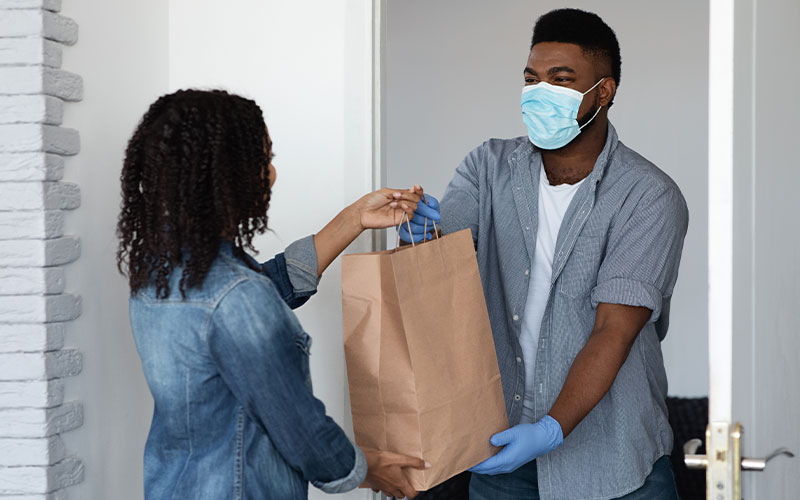It’s no secret the retail industry has undergone dramatic changes this year. Because of the pandemic, a major disruption has been the increase in customers’ buying online and picking up in-store (BOPIS) and taking advantage of contactless curbside pickup. For example, Best Buy and Target will see their e-commerce sales more than double, due to the popularity of their curbside pickup offerings.1 Add to this the expectation of a frictionless, personalized omni-channel shopping experience—customers want to shop at their favorite stores and brands anytime, anywhere, on any device.
The chaos of 2020 is expected to speed up the growth of omni-channel and e-commerce by 30%.2 With the pandemic shutting down non-essential businesses for months, it pushed a significant number of shoppers into trying e-commerce while others had no other choice with the closure of physical stores. Retailers that could quickly shift from their brick and mortar locations to their online stores saw tremendous growth in e-commerce sales.3
With this push came a new expectation: customers wanted accurate product availability information from the very beginning of their shopping journey. They also wanted to choose how they get the product—i.e. same day pick up, same-day delivery, curbside, BOPIS, or standard shipping. With the increased demand for personalized experiences, that same emotional experience that hooked consumers in physical stores now needs to be built into the online shopping experience.
So, what does it take to be a successful retailer in 2020?
Besides being patient as they comply with local health orders, retailers need to implement technologies that allow them to deliver seamless and personalized experiences to consumers regardless of how customers want to shop. They need to be ready to quickly respond and pivot to changes in consumer behavior when stores suddenly close due to unexpected events, like COVID, social unrest, or natural disasters.
Successful retailers in 2020 could accurately see inventory across their locations and quickly turn retail stores into dark stores to fulfill online orders. Pivoting quickly allowed them to institute curbside pickup when customers could not go into stores due to local health orders, and to use order promising intelligence to profitably get products to customers on time through their channel of choice.
Let’s hone in on a few relevant trends that shed light on today’s customers and what retailers need to provide to be the vendor of choice. According to a survey of 5000 shoppers by Salligent, 35% now shop online weekly (up from 28% pre-COVID), and 35% shop both online and in-person. What’s even more telling is that even after the current pandemic ends, 39% say they plan to shop both online and in-stores.4 This means that retailers that invested in e-commerce before COVID and during this current crisis will continue to see significant returns on that investment.
BOPIS has become increasingly popular for customers who need products immediately but have experienced issues with delivery delays during the pandemic. BOPIS sales for August 2020 grew by 259% year over year.5 It’s not only convenient for customers but also profitable for retailers who pick up additional sales.
Another interesting trend is the popularity of curbside pickup. Curbside saves customers time and money while making shopping more convenient. Shoppers want to know an item is available before they go to the store. Second, they are increasingly facing long lines when they go to stores, and with curbside, they can quickly get their items within a few minutes from the comfort of their vehicle. Last, and one that’s probably most relevant due to COVID safety concerns, curbside eliminates the need for customers to enter stores.6
2020 has taught all of us to prepare for the unexpected. Retailers that have done well invested in technologies that gave them visibility into inventory availability across their network and could subsequently quickly pivot when shoppers moved to their online stores. And they used fulfillment optimization to profitably deliver on their promise to customers across ever-changing channels. Successful retailers leveraged technologies that enabled them to drive their e-commerce business to new heights.
Offering personalized fulfillment experiences to consumers in 2020 is the new digital imperative, and Blue Yonder is excited to help retailers speed up their e-commerce business. We enable retailers to bring fulfillment transparency directly to consumers. With our inventory availability microservice, retailers can deliver on their promise with real-time inventory availability across channels and enterprise reservations. And with our omni-channel fulfillment intelligence microservice, retailers can optimally deliver the right product, at the right time, at the right place.
To learn more about how Blue Yonder can accelerate your e-commerce business, click here.

